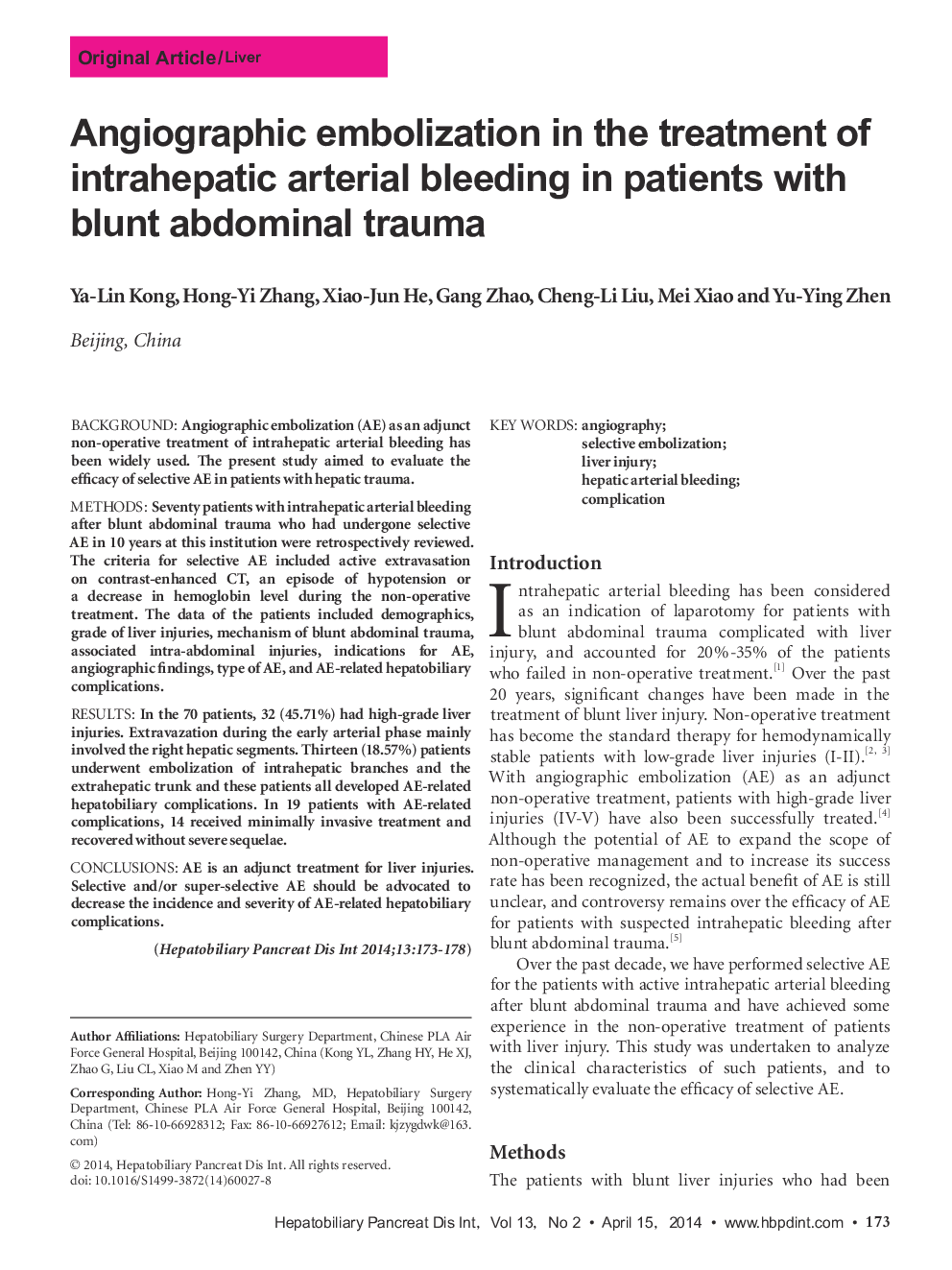| Article ID | Journal | Published Year | Pages | File Type |
|---|---|---|---|---|
| 3337537 | Hepatobiliary & Pancreatic Diseases International | 2014 | 6 Pages |
BackgroundAngiographic embolization (AE) as an adjunct non-operative treatment of intrahepatic arterial bleeding has been widely used. The present study aimed to evaluate the efficacy of selective AE in patients with hepatic trauma.MethodsSeventy patients with intrahepatic arterial bleeding after blunt abdominal trauma who had undergone selective AE in 10 years at this institution were retrospectively reviewed. The criteria for selective AE included active extravasation on contrast-enhanced CT, an episode of hypotension or a decrease in hemoglobin level during the non-operative treatment. The data of the patients included demographics, grade of liver injuries, mechanism of blunt abdominal trauma, associated intra-abdominal injuries, indications for AE, angiographic findings, type of AE, and AE-related hepatobiliary complications.ResultsIn the 70 patients, 32 (45.71%) had high-grade liver injuries. Extravazation during the early arterial phase mainly involved the right hepatic segments. Thirteen (18.57%) patients underwent embolization of intrahepatic branches and the extrahepatic trunk and these patients all developed AE-related hepatobiliary complications. In 19 patients with AE-related complications, 14 received minimally invasive treatment and recovered without severe sequelae.ConclusionsAE is an adjunct treatment for liver injuries. Selective and/or super-selective AE should be advocated to decrease the incidence and severity of AE-related hepatobiliary complications.
